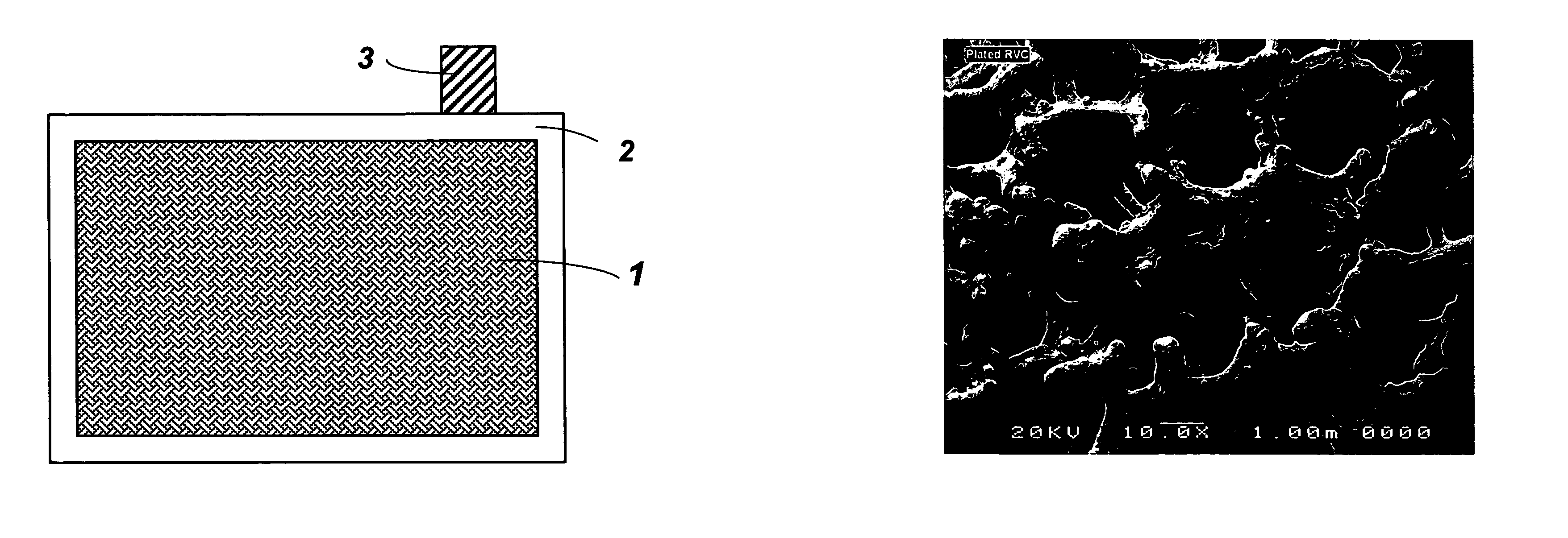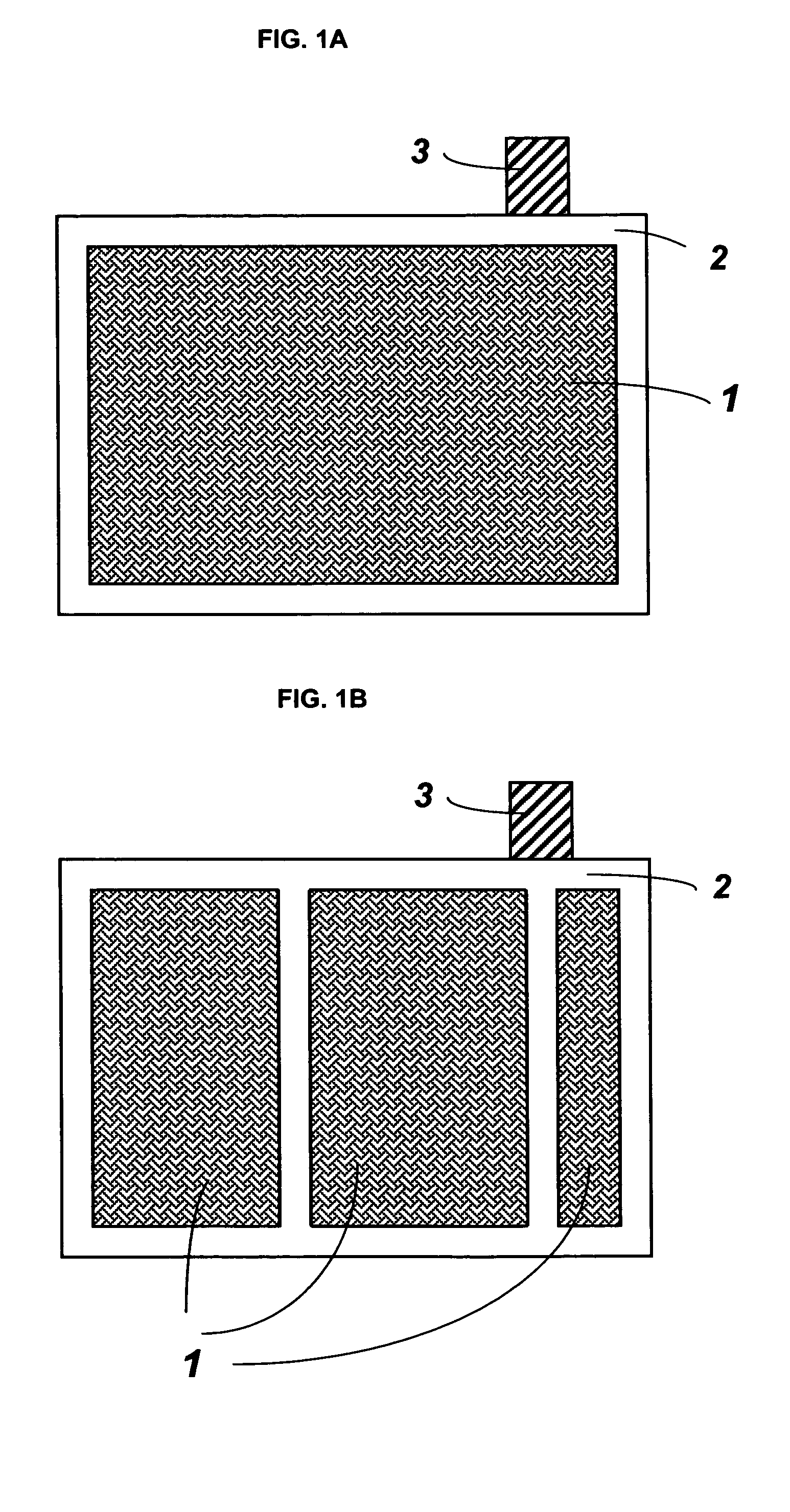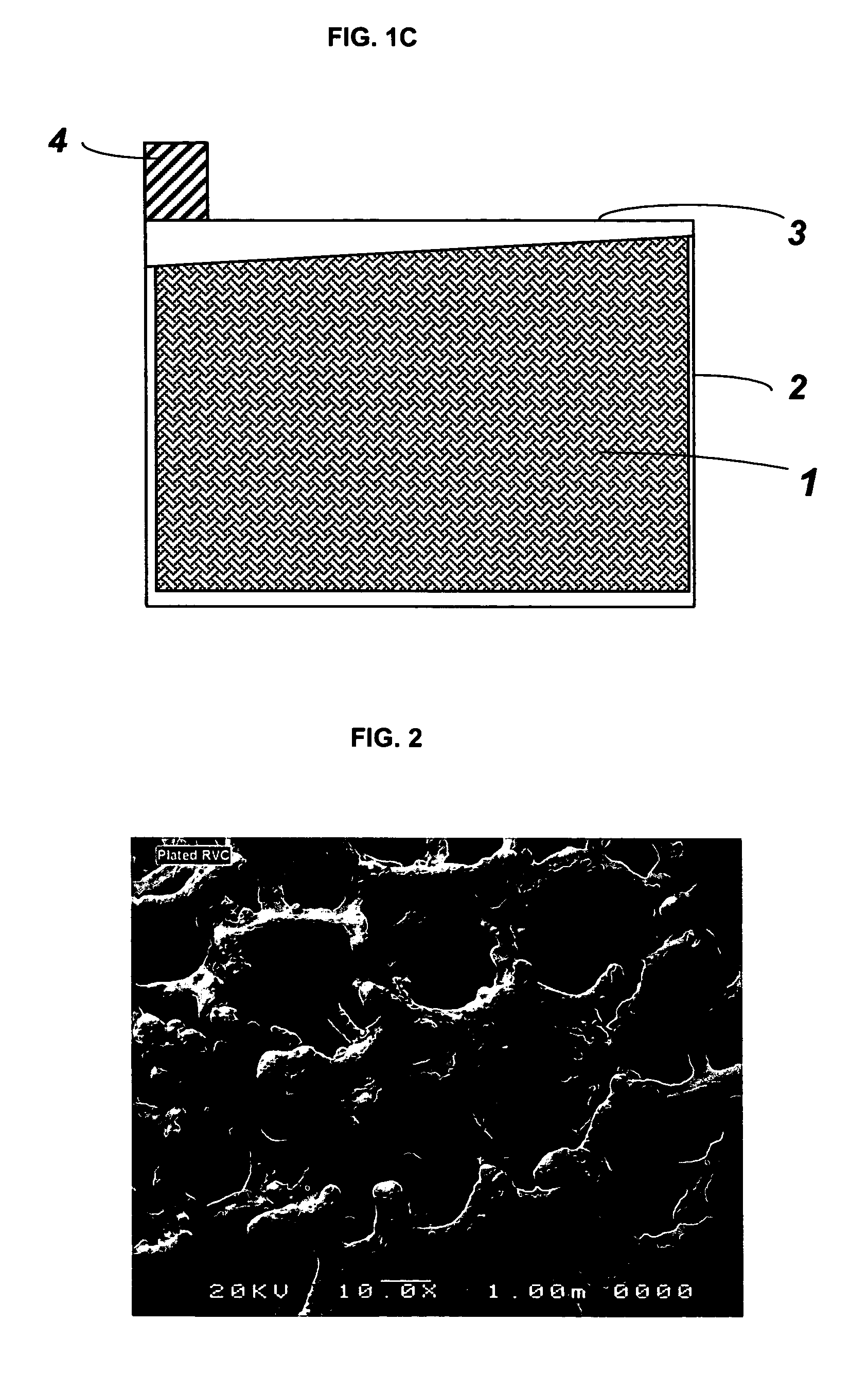Current collector structure and methods to improve the performance of a lead-acid battery
a lead-acid battery and current collector technology, applied in the field of current collector structure and methods to improve the performance of lead-acid batteries, can solve the problems of limiting the actual specific energy of lead-acid batteries, imposing challenging performance demands on battery technologies, and low utilization efficiency of active mass, so as to enhance the cyclability of subsequent high surface area electrodes, the effect of improving performan
- Summary
- Abstract
- Description
- Claims
- Application Information
AI Technical Summary
Benefits of technology
Problems solved by technology
Method used
Image
Examples
example 1
Manufacturing of the Reticulated Current Collector
[0025]In one embodiment of the present invention, reticulated vitreous carbon (RVC) slabs with 20 and 30 pores per inch (about 8 and 12 pores per centimeter, respectively) were used as substrates for grid manufacturing. The RVC slab having dimensions of: 15.2 cm×15.2 cm×12.8 mm (height×width×thickness) was sliced to a preferred thickness of about 3.5 mm, using a steel cutter. After slicing, the height and width of the carbon slab was adjusted to the size needed for the particular battery. One of the commonly employed current collector sizes is 12.7 cm×12.7 cm (height×width).
[0026]Following size adjustment, the vitreous carbon substrate was uniformly coated with a layer of lead-tin alloy. A variety of methods can be used for the deposition of lead-tin alloys on carbon based substrates, such as electroplating and vacuum deposition. In the present invention electroplating (or electrodeposition) was chosen to apply the lead-alloy coating...
example 2
Effect of Coating Composition on the Battery Cycling Performance
[0033]In order to compare the performance of the pure lead and lead-tin alloy reticulated collectors, two flooded, single cell, 2 V, batteries were assembled, equipped with pasted plates using pure lead and lead-tin (1% by weight of tin) coated collectors, respectively. The pure lead and lead-tin coated collectors were manufactured according to the procedure described in Example 1. The following table summarizes the plating recipes and plating conditions.
[0034]
TABLE 1Electroplating conditions.LeadLeadLead-TinLead-TinCoatedCoatedCoatedCoatedPositiveNegativePositiveNegativeRecipe per one liter of500 ml of 50% by74 ml of 50% byelectrolyteweight Pb(BF4)2; 410weight Sn(BF4)2, 510ml of deionized water,ml of 50% by weight27 g of H3BO3, 90 mlPb(BF4)2; 376 ml ofof HBF4, and 3 g ofdeionized water, 27 gpeptoneof H3BO3, 40 ml ofHBF4 , and 1 g ofgelatinCurrent Density (A / m2)570570570570Plating Temperature25252525(° C.)Plating Time (...
example 3
Performance Comparison Between Batteries Employing Book-Mould Grids and Electroplated Reticulated Vitreous Carbon Current Collectors
[0037]The comparative nominal capacities, Peukert diagram, for the performance limiting positive electrode in the case of two flooded single-cell 2 V batteries employing book-mould and lead-tin (1% by weight of tin) electrodeposited RVC collectors, respectively, is shown by FIG. 5. Both battery types were pasted, assembled and formed under identical conditions. The lead-tin electrodeposited reticulated grids were prepared according to the method described in Example 1 and Example 2. The employed discharge currents corresponded to discharge rates between 24 to 2 h for the positive limited electroplated RVC collector battery and 12 to 2 h for the book-mould grid battery, respectively (FIG. 5).
[0038]Discharging the two batteries at a current of 27.5 A / kgPAM the specific discharge capacity of the positive plate using the electrodeposited RVC collector was 1...
PUM
| Property | Measurement | Unit |
|---|---|---|
| surface area | aaaaa | aaaaa |
| thickness | aaaaa | aaaaa |
| specific energy | aaaaa | aaaaa |
Abstract
Description
Claims
Application Information
 Login to View More
Login to View More - R&D
- Intellectual Property
- Life Sciences
- Materials
- Tech Scout
- Unparalleled Data Quality
- Higher Quality Content
- 60% Fewer Hallucinations
Browse by: Latest US Patents, China's latest patents, Technical Efficacy Thesaurus, Application Domain, Technology Topic, Popular Technical Reports.
© 2025 PatSnap. All rights reserved.Legal|Privacy policy|Modern Slavery Act Transparency Statement|Sitemap|About US| Contact US: help@patsnap.com



